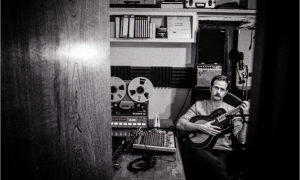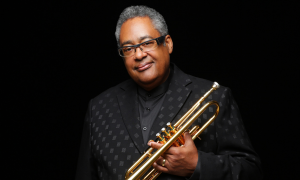Dan Alexander, a musician and recording engineer in San Francisco, has been a dealer of vintage pro audio gear for at least 20 years, and, in the early 1980s, sold me my first pair of Neumann M 50s and all my Schoeps 221Bs. I was thus quite curious when I heard that, in addition to selling large Neve consoles and individual channel strips, he had entered the manufacturing arena with a mic preamp-one whose circuitry emulates that found in the famous Neve 1073/1064/1066 modules.
Features
The preamp's controls are basic, but well thought-out. Its front panel features a feedback loop gain switch - varying gain from 20 to 50 dB in five dB steps, an output level control, polarity reverse and phantom power switches, and a 1/4-inch “direct box" input. The front panel also provides another 1/4-inch output jack, which is a direct mult of the DI input signal, and is meant to be plugged into a musical instrument amplifier. The rear panel contains XLR input and output connectors as well as a 1/4-inch unbalanced output. The power supply is a large 24VAC “line lump" which connects to a small power jack on the preamp's rear panel.
What is a Neve mic preamp anyway?
Many large format consoles from the '70s and '80s are still in use today - usually after having been upgraded with newer passive parts and, often, active ones as well. Old brands like Neve, Trident, API, and Langevin are becoming buzzwords to a new generation. Other vintage consoles, however, have not been upgraded and, instead, have been scavenged for parts (usually channel strips and similar modules) to serve as the raw material for building “new" equipment, or as templates for the design of modern replicas.
Dan Alexander's mic preamp is a hybrid of those two approaches. He uses the input and output transformers from original Neve modules, but builds new amplifiers - with all new parts - whose circuitry is schematically equivalent to the original. Which original, a Neve freak might ask? Although the first Class A Neve “mic preamps" were part of hard to find console modules such as the 1073, 1064, 1066, 1084 or 1089, some of today's designers turn the more readily available 1272 module into a mic preamp. The 1272, however, was a line/summing buss amplifier used in early 1970s Neve consoles such as the 8048, 8014, 8016, and BCM-10 portable mixer and, as such, was never used by Neve as a mic preamp. Nevertheless, Sir Rupert Neve himself, when asked what he thought about people rewiring it as a mic preamp, is reported to have said, “Why not? It has all the same stuff inside."
The bottom line is that the classic Neve Class A amplifier circuitry from the early '70s was used in virtually all of the modules, and Dan Alexander's mic preamp uses the same circuitry, with the special addition of authentic Neve transformers - a LO1166 or a 2567 (with a 1310 coil for DC blocking) for output, and a 31267 for input.
In Use
Okay, so Dan Alexander's mic preamp is a Neve clone; what exactly does it sound like?
In a word, big and bold! Just about everything I put through it acquired this characteristic, perhaps attributable to a slight forward quality in the upper mid-range and a slight brightness in the high end. The lows sounded comparable to other good solid state preamps I have on hand (Crane Song, Millennia Media), but still sounded “different" from them - not deeper or louder; merely “stronger."
I first played my 1964 Hofner bass through the preamp's direct inputs, and compared the resulting sound with that provided by my favorite bass preamp, the Manley VoxBox. Big difference here! The Manley (with flat EQ and no compression) sounded smoother, but less “exciting" while the Dan Alexander preamp gave my round-wound strings much more “life" and presence. A great combination was the Dan Alexander preamp feeding the VoxBox's compression and EQ sections!
I then tried out just about every mic I own through it - from vintage Neumanns, AKGs, and Schoepses to beyer M88s and M500s, as well as a “cheap" Groove Tubes AM11 - and compared the results with the aforementioned solid state preamps, as well as tube gear by Manley and Fearn. While the other two solid state preamps are definitely in the “neutral" camp, and the Manley MicEQ500 and Fearn VT-2 are definitely (and quite differently) colored, the Dan Alexander box made my 47 sound larger than any of the others did, my small diaphragm Schoeps 221Bs sound almost like Neumann KM 54s, and gave my beyer stage vocal mics a welcome bit of extra presence. Even the rather dark-sounding solid state Groove Tube mic came alive. The preamp's “coloration" was especially effective on voice, drums, bass and guitar.
To further investigate the preamp's sound, I hooked in a little “re-preamp" box. After playing various CDs and master tapes “back through" the Dan Alexander mic preamp, I concluded that this is not a preamp for the two-mic audiophile purist; its stereo image is more “closed-in" than my other (more expensive) mic preamps, and any source possessing the least amount of harshness becomes a bit edgy. But when the source needs livening up, or more of a distinct personality, this relatively inexpensive box really does miracles!
Summary
Sometimes one needs smooth and relaxed; sometimes, big and bold. If you want your vocals or drums or bass to come alive with extra presence, I would strongly recommend trying your favorite mics through the Dan Alexander Class A “Neve" mic preamp. Sir Rupert certainly knew how to get a big sound, and Dan Alexander has effectively packaged that “euphonic coloration" for this century.
Dr. Fred Bashour is a classical music producer/engineer and a regular contributor to Pro Audio Review.
For more information contact All About Jazz.

























